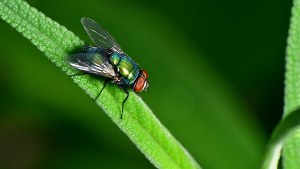Choosing the right flea protection for your dog can be quite a hassle as there are so many products on the market.
While relatively new on the market, chewable tablets sound very tempting as the treatment is easy to administer and you only need to give it once a month or even every three months. Should you use Nexgard for your pet?
Well, you might want to read about the side effects first, because this sort of treatment can be lethal to your dog.
Sure, many pets tolerate Nexgard well, but some don’t and you don’t want your pet to be among the latter.
What is Nexgard?
According to the manufacturer, Nexgard tablets are dogs’ ‘No.1 preferred chews’. How many dogs were polled, we don’t know.
At the same time, Nexgard is the ‘vets No.1 choice as flea treatment’. How many of these vets receive various incentives to recommend this particular treatment, again we don’t know.
Technically, Nexgard uses an active ingredient called afoxolaner, which is presented as an insecticide and acaricide, that is it kills fleas and ticks.
The product is licensed for use in dogs from the age of eight weeks and it is available in four different presentations, depending on your pet’s weight.
How does Nexgard work?
Once your dog chews the tablet, which has a tasty beef flavor, the active ingredient enters the blood within four to eight hours and stays there for up to one month.
It starts killing fleas in 4 – 8 hours and ticks the next day. Basically, when a flea or a tick bites, it gets poisoned.
This afoxolaner attacks the nervous system of the insect and kills it. Sounds pretty simple and effective, but what you need to consider is the fact that there’s this poison in your dog’s blood and it can have serious side effects.
What is the proper dosage of Nexgard?
There are four types of Nexgard chews on the market, specially designed for puppies and toy breeds, small, medium and large dogs up to 121 pounds. You should choose the correct dosage carefully.
Can you overdose a dog on Nexgard?
The toy breed variant contains 11.3 mg of afoxolaner, while the one for large breeds has 136 mg, which is ten times as much. So you don’t want to give that much insecticide to your pet Chihuahua.
The product has many side effects as it is, so an overdose might be too much for his system.
For all four types, one tablet per month is enough to keep your pet flea and tick-free.
The manufacturers warn you should not give your pet more than one tablet per month, as it is unnecessary. And dangerous.
The many dangerous side effects of Nexgard…
If you check out the official Nexgard page, you’ll be surprised to see that the first thing they tell you about these tablets are the side effects.
Not the benefits, but the side effects. That’s because there are many, they’re serious and there have been cases of dog killed by this product.
The most common adverse reactions observed include vomiting (with or without blood), itching, dry flaky skin, diarrhea (again with or without blood), lethargy and loss of appetite.
The product is not to be used for pets with a history of neurological disorders, since the active ingredient targets the nervous system of fleas, ticks and, quite possibly, that of the dog itself.
At the same time, there are no safety studies concerning the administration of Nexgard to pregnant bitches, breeding or lactating dogs.
The product can also cause allergic reactions, with symptoms like swelling and hives.
These are the warnings posted by the manufacturer. If you go online, the story gets much darker.
As mentioned before, some dogs do just fine on Nexgard, but others had serious adverse reactions and died within days. Or had to be put to sleep because of their poor condition.
The main problem with such a product is that you cannot know how it will affect your pet and once it is in the dog’s blood you cannot remove it.
It’s not like a flea collar that you can take off if your pet has a reaction to it. This is the main reason many vets refuse to prescribe this treatment. If things go bad, there’s not much they can do about it.
In 2018, the FDA issued a special warning concerning flea treatments in the isoxazoline class, which includes the afoxolaner in Nexgard, but also the active ingredients in similar products, such as Bravecto, Credelio and Simparica.
These drugs can cause neurological problems even in dogs with no history of seizures. The fact that the FDA felt the need to issue this warning should alert you to the possible dangers of using these tablets.
However, the product is still deemed safe, since it has not been pulled off the market. Yet.
If you want to know what other pet owners have to say about Nexgard, check out this Facebook group, which has many heartbreaking stories.
You owe it to your dog to study the side effects of these tablets carefully as once you give one to your dog there’s no undoing it.
My dog hates Nexgard! How can you “hide” pills in other food?
In most cases, dogs are very eager to take their Nexgard since it has a beef flavor, but there are also those who won’t touch it.
In this case you can wrap the tablet in a piece of meat, raw or cooked, and offer it to your pet as a special treat. Or you can coat in a bit of peanut butter, if you normally give this to your dog.
Make sure to store these tablets in a locked cabinet as dogs will be attracted by their flavor and they can easily overdose on them.
What are the alternatives to Nexgard?
If you’re thinking about similar products, there are several other chewable tablets to be used against fleas and ticks.
Bravecto tablets work for up to three months, which might be very convenient for dog owners.
On the other hand, you need to consider that the dosage must be quite high to be effective for such a long period.
Actually, there are way more adverse reactions cases reported for Bravecto than for Nexgard. The number of deaths caused by Bravecto is in the hundreds.
Simparica is even newer on the market and there are already very disturbing reports about the damages it causes.
Instead of chewable tablets, you can use topical treatments, such as Frontline or Fleaway. Since they have insecticides as their active ingredient they do cause various side-effects, some of them quite serious.
Four home remedies for flea treatments?
If you want to avoid nasty chemicals, you can try natural products you can find at specialized stores or make your own flea treatment. It’s not hard at all.
- Coconut oil – Take a bit of coconut oil and rub it in your hands to warm it up and make it less dense, then apply it on your pet’s fur. It works by making the fleas greasy, limiting their mobility and eventually suffocating them.
- Apple cider vinegar – You can give your dog 1/2 a teaspoon per day per 25 lbs of weight. Also, you can make an ACV spray. Mix 4 oz of warm water with 6 oz of apple cider vinegar and 1/4 teaspoon of salt. Pour the solution in a spray bottle and spay your dog with it every week. Pay special attention to the underbelly, legs and tail. You can also use this solution on the dog’s bedding.
- Essential oils – Fleas hate certain essential oils, such as lavender, lemon, peppermint, clary sage or palmarosa. You will need a carrier oil, preferably grape seed oil or coconut oil. Use 3-6 drops of essential oil per 1 oz of carrier oil. Rub a bit of the mixture on the back of your dog’s neck or you can put it on a collar or a bandana.
- Pumpkin seeds – This remedy can be used during the flea season or all year around as a preventive measure. Ground or chop the seeds finely. You can safely feed your dog a quarter of a teaspoon of ground pumpkin seed sprinkled over their food. Give this special treat 2-3 times per week.
Obviously, these natural home remedies take more time to prepare and apply, which is one of the main reasons many pet owners are tricked into using chemical products you only need to administer once a month or less.
But, on the other hand, they’re safe.
Closing Thoughts
Chewable tablets for flea control are marketed as the easiest option to keep your pet’s coat insect-free.
Give one tablet once a month or less, and you’re done. The downside is products like Nexagrd contain powerful insecticides.
These work by attacking the fleas’ nervous system, but they can also damage your dog’s nervous system.
Even the FDA admitted there’s a problem with this type of products and they can cause neurological problems. Weigh the risks carefully before administering something like Nexgard to your dog and consider using natural remedies.





